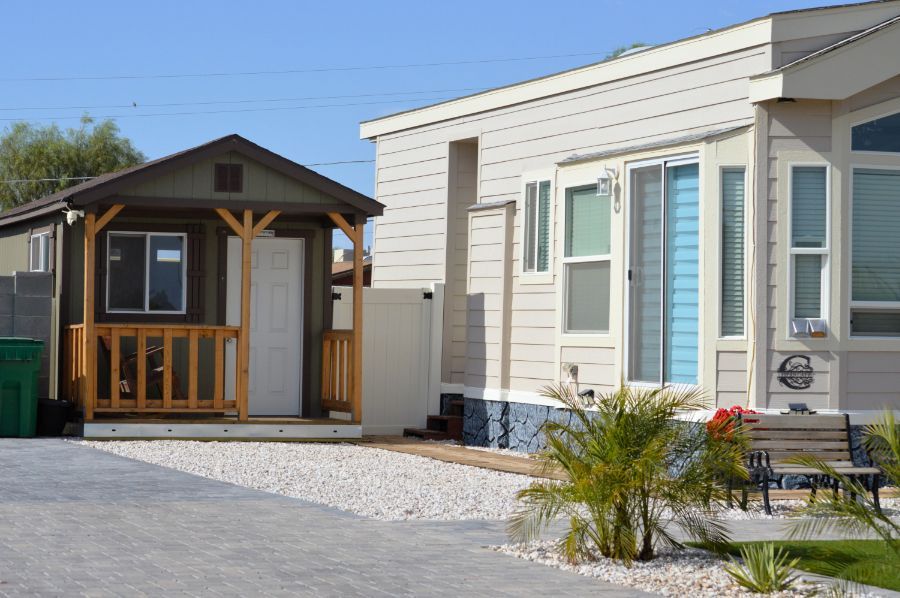Best Practices for Effective Landlord and Tenant Communication
Dustin Edwards • October 5, 2021
Communication is Essential for Success with Rental Properties

Communicating well with your tenants is essential to being a successful landlord. If you can relate to your tenants, they will feel comfortable with you and will appreciate having a landlord they can rely on and trust. This trust will cultivate respect toward you and your Long Beach rental.
However, fostering strong and successful connection can be challenging, especially for new landlords. To help alleviate this difficulty, here are some of the best practices for effective communication between landlords and their tenants.
Identify a Preferred Contact Method
One of the most important steps toward effective communication is finding a contact method that both parties are comfortable and proficient in. The most common contact methods are texting, emailing, or calling. All three options are fairly easy and require little transfer of information other than a phone number or email address.
Since everyone has different preferences when it comes to communicating, you should have a conversation with new tenants about how they would prefer to contact you. Using their preferred contact method will better guarantee a response if you need to contact them.
Additionally, it may be helpful to place a list with your phone number and email address on the rental’s fridge, calendar, or bulletin board. That way, if your tenants ever forget how to reach you, all they have to do is reference the list. This can be especially helpful in emergencies.
Set Expectations on Response Time
Once you establish a preferred contact method, it is important to set expectations on when your tenants should respond to messages. That being said, as their landlord you should hold yourself to the same expectations. Tenants will not respect a landlord who makes them follow a set response time but responds haphazardly.
For starters, provide a realistic time frame that you and your tenants can use to voice minor inconveniences or inquiries, such as 9 AM to 5 PM. Furthermore, set a response time of one to two days. This gives you and your tenants plenty of time to curate a sufficient reply. Conversely, there should be no time frame for emergencies, and response times should be almost immediate. Emergencies can come up at any time, day or night, and you need to be available whenever they occur. It is your responsibility as a landlord to look out for your tenants and protect them from danger (such as fires or water main leaks), otherwise, you could be held liable for any injuries.
Document All Communication
Whenever you communicate with your tenants, you should keep a log of the entire conversation. This is especially easy with texts and emails since they stay saved unless you take the time to delete them. Nevertheless, even when it comes to calls, try to jot down notes of your conversation.
There are many benefits to documenting all correspondence between you and your tenants. For one, it can protect you from any liability if tenants try to twist your words or falsify incidents. Second, it can act as a reminder for you to complete a task or schedule a repair that your tenant requested.
Moderate Word Choice
Moderating your word choice and avoiding harsh speech is important to bridging effective communication between you and your tenants. If you are rude and hostile toward your tenants, then they will stop coming to you with rental problems, and they will also stop respecting you.
To better recognize bad behaviors in the future, it is best to first acknowledge and understand them:
- Accusatory tone - saying the word “you” (i.e. “What were you thinking?” or “You need to stop this.”).
- Foul language - cussing out your tenants or yelling expletives at them.
- Dismissive response - accusing your tenants of being overdramatic or brushing off their requests for repairs.
These actions are some of the common bad behaviors that will prove unproductive when communicating with your tenants. They will act as nothing but a communication barrier, preventing your tenants from trusting you or feeling comfortable in your Long Beach rental. Respect is not earned by belittling or yelling. Rather, it is earned by being respectful.
Understanding the best practices for effective communication is a complicated but necessary process to be a good and favorable landlord. If you would like further assistance with conversing and relating to your tenants, we invite you to call us today at (562) 888-0247 or you can fill out our Owner Application online.





